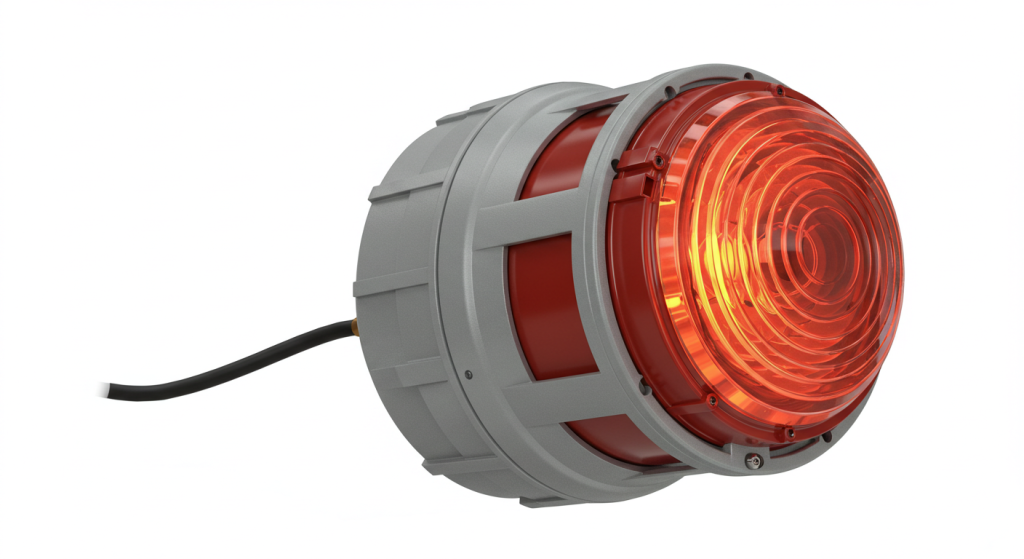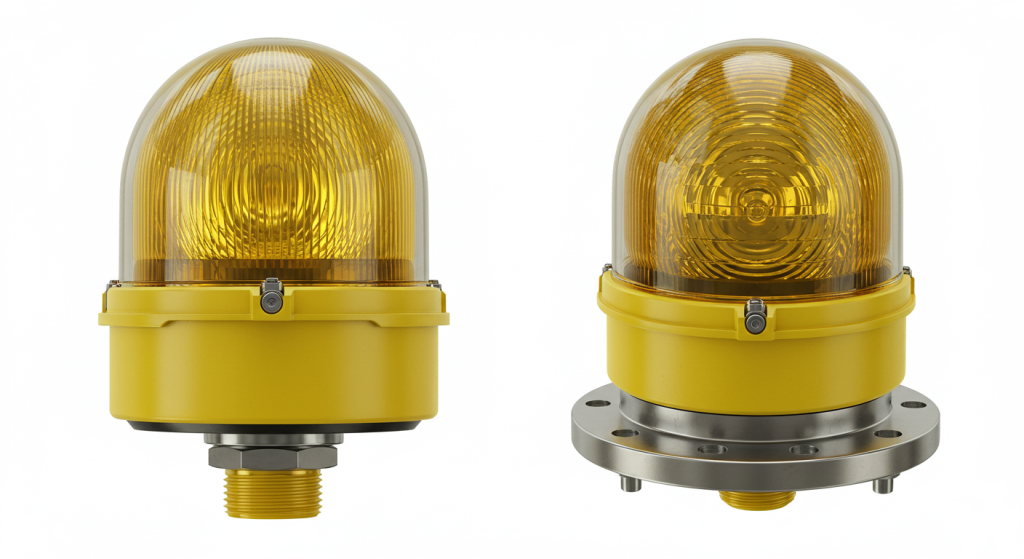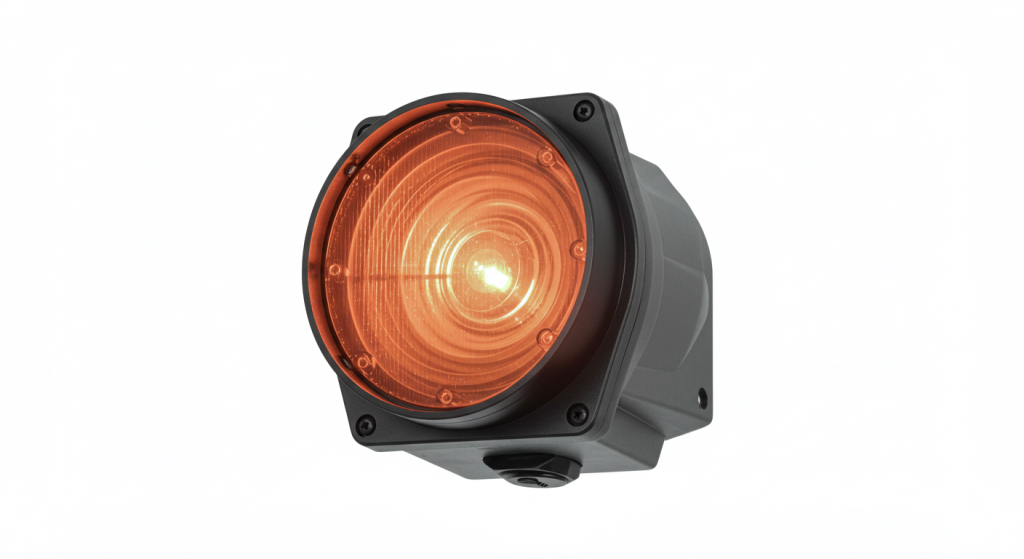Aviation, by its very nature, is a dance between the freedom of flight and the careful management of risks. As the global landscape becomes more complex, with ever-taller structures dotting our horizons, the role of aviation obstruction lights takes on paramount importance. This article explores the multifaceted world of these specialized lighting systems, examining their evolution, the key technologies that power them, and the future trends shaping their development. Our aim is to provide a comprehensive understanding of why aviation obstruction lights is not just a necessary requirement but a cornerstone of air safety.

The Importance of aviation obstruction lights
The primary purpose of aviation obstruction lights is to make structures visible to aircraft, especially during periods of low visibility or at night. These structures, which can include communication towers, wind turbines, tall buildings, and even cranes, present a significant hazard to aviation. Without adequate warning, these obstacles could lead to catastrophic collisions.
The evolution of aviation obstruction lights has been a continuous process of innovation, driven by the need for greater safety and efficiency. What started as rudimentary incandescent lights has now transformed into sophisticated LED-based systems with smart controls and remote monitoring capabilities. This evolution underscores the importance of these systems in safeguarding air traffic.
A Historical Look at aviation obstruction lights
Early forms of aviation obstruction lights were quite primitive, often employing incandescent lamps or simple markers. These systems were unreliable, consumed a great deal of energy, and required frequent maintenance. The transition to gas discharge lamps like xenon flash tubes improved visibility, but these also came with drawbacks related to energy usage and upkeep.
The real game-changer in aviation obstruction lights arrived with the advent of LED technology. This leap drastically improved efficiency, reduced maintenance, and enhanced visibility. Today, LED-based systems are becoming the standard, thanks to their numerous advantages and cost-effectiveness.

Key Milestones in aviation obstruction lights:
- Early Days: Incandescent lamps and unlit markers
- Mid-20th Century: Introduction of gas discharge lamps
- Late 20th – Early 21st Century: Emergence of LED technology
- Current Era: Smart lighting systems and remote control
Understanding the Components of aviation obstruction lights Systems
A well-functioning aviation obstruction lights system is more than just a collection of lights; it’s a complex arrangement of interconnected components that work together to achieve the intended safety objectives. Here are the core elements:
Key Components:
- Light Fixtures: These are the housings that contain the light source and optical lenses.
- Control Systems: Manage the light operation, often featuring sensors, timers, and remote monitoring.
- Power Supplies: Ensure a consistent flow of power to the light fixtures, often with backup systems.
- Wiring: The network of wires connecting power supplies and lights to a control center.
- Mounting Hardware: Necessary to secure fixtures on structures.

Types of Aviation Obstruction Lights:
Aviation obstruction lights are categorized based on several factors, including color, intensity, and type. Here’s a breakdown:
| Category | Description | Typical Use |
|---|---|---|
| Color | Red and white are primary colors. Red is used for nighttime marking, and white for daytime and sometimes nighttime. | Red: Nighttime, low visibility. White: Daytime and sometimes night with higher intensity flashing lights. |
| Intensity | Low, medium, and high intensities are used based on structure size and location. | Low: Smaller, less hazardous structures. High: Tall, high-risk structures. |
| Type | Steady burning, flashing, and combined lights are used based on specific requirements. | Steady: Low-risk. Flashing: To increase attention. Combined: To provide both visibility and attention-grabbing properties. |
The LED Revolution in aviation obstruction lights
The transition to Light Emitting Diode (LED) technology has transformed aviation obstruction lights. LEDs offer a compelling combination of energy efficiency, longevity, and superior light output, making them far superior to their predecessors.
Advantages of LED Technology:
- Energy Efficiency: Consumes significantly less power than traditional lights.
- Long Lifespan: Lasts much longer, reducing replacement frequency and maintenance.
- High Reliability: More robust and less prone to failure.
- Superior Visibility: Provides brighter, more consistent light with better beam shaping.
- Reduced Maintenance: Lower replacement rates mean fewer maintenance interventions.
- Lower Operating Costs: Lower energy usage and less frequent replacement lowers overall costs.
Top 5 Trends in aviation obstruction lights
The field of aviation obstruction lights is continually advancing. Several key trends are reshaping the industry, making it safer and more efficient. Here are five of the most notable trends:
1. Dominance of LED Technology
As previously stated, the widespread adoption of LED technology continues to be the most dominant trend. The superior performance and reduced operational costs of LEDs make them the preferred choice in modern aviation obstruction lights systems. This move is expected to continue and intensify over the next few years.
2. Smart Lighting and Remote Monitoring
Smart lighting systems and remote monitoring allow for real-time management of lighting infrastructure. These systems monitor the status of the lights and adjust lighting parameters in real-time, making the systems efficient and reliable. Operators can now monitor the system status remotely and address problems as they arise.
3. Wireless Communication
Wireless communication is used to connect lighting systems to control centers, simplifying operations and maintenance. Wireless technology eliminates the need for complicated cabling, offering flexible installation options and easier monitoring for remote locations. This helps streamline overall management.
4. Solar-Powered Solutions
Solar-powered aviation obstruction lights solutions are gaining popularity, especially in remote locations where access to the main power grid is limited. These systems utilize renewable energy and are ideal for use in difficult locations, offering a sustainable and efficient alternative.
5. Advanced Light Beam Shaping
Modern optics in obstruction lights precisely control the light beam to reduce light spill and light pollution. By limiting light to the intended area, light is focused on where it’s needed, reducing environmental impact. These innovations help balance safety and environmental concerns.
Why LED Lighting Systems Benefit Tower Operators
For tower operators, LED-based aviation obstruction lights systems provide several advantages that can improve operational efficiency and reduce costs. These advantages include:
- Reduced Total Cost of Ownership (TCO): Despite a higher initial investment, the lower operating and maintenance costs of LEDs result in significant savings over time.
- Minimized Downtime: Greater reliability reduces the chances of failure, minimizing downtime.
- Improved Regulatory Compliance: Modern LED systems are designed to meet stringent industry standards.
- Simplified Maintenance and Management: Remote monitoring and control simplify the operational oversight.
- Enhanced Safety: Better lighting contributes to safer air traffic with improved conspicuity.
Regulations and Standards for aviation obstruction lights
The design and implementation of aviation obstruction lights systems are heavily regulated to ensure safety and consistency. These regulations are set by both international and national bodies.
Key Regulatory Bodies:
- International Civil Aviation Organization (ICAO): Sets global standards for aviation lighting.
- Federal Aviation Administration (FAA) (USA): Provides specific guidelines for U.S. aviation infrastructure.
- European Union Aviation Safety Agency (EASA): Establishes standards for the European Union.
These regulations cover a wide range of elements, including light intensity, color, beam shaping, flash rate, and more. Adherence to these standards is critical for safe operations.
The Future of aviation obstruction lights
The field of aviation obstruction lights is constantly evolving, with future developments focusing on sustainability, intelligent automation, and enhanced safety. Here’s what to expect in the coming years:
Emerging Trends:
- Increased AI Integration: AI systems will analyze data to optimize performance.
- Drone Detection Integration: Lighting systems will work in tandem with drone detection.
- Advanced Energy Storage: More efficient storage will make solar power more reliable.
- Dynamic Lighting Adjustments: Lighting will dynamically adjust based on visibility conditions.
- Focus on Sustainability: Emphasis on eco-friendly materials and reduced energy consumption.
Conclusion
aviation obstruction lights has progressed from rudimentary devices to sophisticated, technologically advanced systems. The adoption of LEDs, smart lighting, and renewable energy sources have dramatically improved the efficiency and reliability of this critical safety measure. As the skies get more crowded, the need for aviation obstruction lights will only grow, underlining its importance in the aviation ecosystem.
Looking ahead, aviation obstruction lights will continue to evolve to meet new challenges and changing technologies. By adhering to stringent standards and embracing innovation, we can ensure that the skies remain safe for all.
The future is marked by advancements in AI, wireless connectivity, and solar power, all of which will enhance the efficacy of these vital safety systems. The field will continue to be driven by the needs of modern aviation and a focus on sustainability, meaning we are likely to see increasing efficiency in LED lighting and solar-powered systems.
aviation obstruction lights is more than just a requirement; it is an essential element in creating a safer, more efficient, and more sustainable aviation ecosystem. By embracing technological advancements, the field of aviation obstruction lights will continue to play a vital role in the future of air travel.
The field will continue to develop to meet the challenges of a changing world. As the skies grow more crowded and structures become taller, the future of aviation obstruction lights will become more complex. Continued research and development and stringent adherence to regulations will be vital in ensuring the safety of air traffic for many years to come.
In summary, aviation obstruction lights is a critical infrastructure component that ensures safe air traffic. This vital system requires constant innovation and stringent regulation to continue meeting its safety goals.